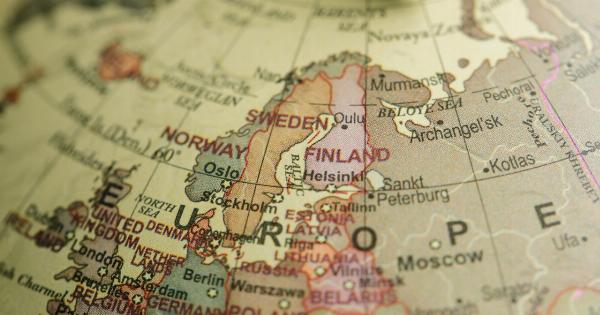Infertility is a growing concern all over the world. However, there are certain countries where the male infertility rate is higher than others. In this article, we have identified the nations with poor male fertility rates in Europe.
Greece
Greece tops the list when it comes to poor male fertility rates in Europe. According to the European Society of Human Reproduction and Embryology, Greece has the lowest sperm count in Europe, with an average sperm count of 41 million/ml.
Greece is known for its unhealthy lifestyle habits, which include smoking, drinking, and bad eating habits, which can lead to lower male fertility rates.
Spain
Spain is the second country on our list, which has a significant number of men with poor fertility rates.
According to Spanish society of fertility, sperm counts in Spain have dropped by 40% in the last decade, and over the last 30 years, it has declined by 60%. Experts believe that the use of pesticides and chemicals in the food production industry is one of the main causes of this drop in fertility rates among men in Spain.
Italy
Italy is another country that is facing a fertility crisis.
According to a study by the Italian Society of Andrology and Sexual Medicine, the average sperm count of Italian men is 67 million/ml, which is below the World Health Organization’s (WHO) recommended minimum of 75 million/ml. The study also found that 40% of Italian men suffer from erectile dysfunction and 17% suffer from premature ejaculation.
France
France is another European country that is facing a fertility crisis. According to a study by the French Institute for Public Health, the average sperm count of French men has reduced by 32.3% in 17 years between 1989 to 2005.
Research has suggested that the use of chemicals, such as pesticides, in the French agricultural industry could be a contributing factor to this reduction in male fertility rates.
Denmark
Denmark is known for its high standard of living, but it also has one of the lowest fertility rates among men in Europe. According to a 2013 study, the average sperm count of Danish men has dropped by 1.4% per year over the past 15 years.
The study also found that the percentage of Danish men with sperm counts below 40 million/ml increased from 17% to 23% over this period. A possible cause of this decline in fertility rates among men in Denmark could be due to the high level of pollution caused by industrialization and urbanization in the country.
United Kingdom
United Kingdom is also facing a fertility crisis among men. According to a study by the British Fertility Society, the average sperm count of British men is only 62 million/ml, which is below the WHO’s recommended minimum of 75 million/ml.
The study also found that 25% of British men have sperm counts below 33 million/ml. One possible reason for the high rate of male infertility in the UK is the consumption of unhealthy diets and the lack of physical activity.
Germany
Germany is another European country that is struggling with a decline in male fertility rates. According to a study by the German Society of Andrology, the average sperm count of German men has decreased by 20% in the last decade.
The study also found that one in five German men have a low sperm count. Researchers have suggested that the overuse of pesticides, as well as the consumption of unhealthy food, could be some of the causes of poor male fertility rates in Germany.
Norway
Norway is one of the countries with the highest standard of living in the world, but it has one of the highest male infertility rates in Europe.
According to the Norwegian government, infertility affects one in six couples who try to conceive in the country.
A possible reason for this high rate of male infertility in Norway could be the consumption of processed food, which is high in salt and preservatives, and also exposure to endocrine disruptors, such as phthalates and bisphenol A, which are commonly found in plastics and food packaging.
Netherlands
The Netherlands is also facing a fertility crisis among men. According to a study by the Dutch Society of Andrology, the average sperm count of Dutch men has reduced by 1.9% per year, which means it has dropped by 32.2% over the past 27 years.
The study also found that 15% of Dutch men have an abnormally low sperm count. A possible cause of this decline in male fertility rates in the Netherlands could be due to the high level of pollution caused by the country’s agricultural and industrial sectors, as well as exposure to endocrine disruptors in the environment.
Croatia
Croatia is another country where male infertility rates are a growing concern. According to a study by the University Hospital Split, the average sperm count of Croatian men is 37.4 million/ml, which is below the European average of 55 million/ml.
The study also found that 32% of Croatian men have low sperm counts. A possible reason for the decline in male fertility rates in Croatia could be due to the consumption of a high-fat diet, which is common among the Croatian population, as well as exposure to endocrine disruptors in the environment.






























